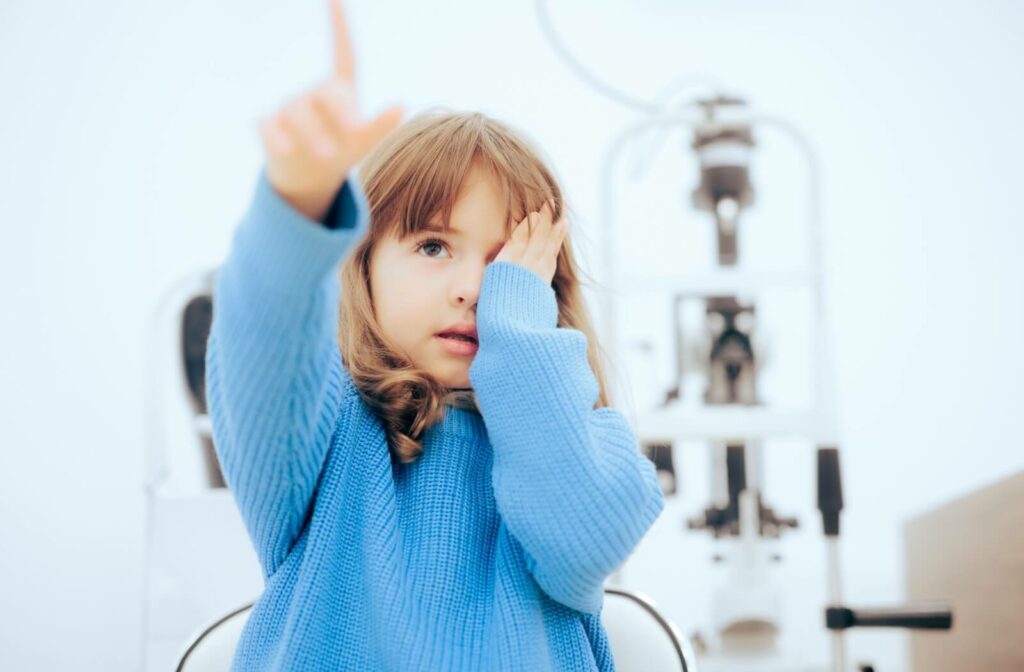Congenital Myopia and School Myopia: Do You Understand Correctly?
Myopia is one of the most common refractive errors in the world, affecting hundreds of millions of people and significantly reducing quality of life if left uncontrolled. Among them, congenital myopia and school myopia are two frequent forms but with different causes, symptoms, and treatment approaches.
So how can we distinguish between them and choose the right intervention? Let’s explore the details in this article.
Congenital Myopia – Definition and Key Characteristics

Young children can also have congenital myopia
- Appears very early (0–3 years), progresses rapidly.
- High degree of myopia, often accompanied by astigmatism.
- High risk of retinal complications and amblyopia, requiring close monitoring.
School Myopia – A Challenge at School Age
- Onset is later, initial degree is mild to moderate.
- Progresses year by year if not controlled.
- Closely related to lifestyle and visual environment.
Causes of Myopia
Congenital Myopia
- Genetics play an important role: if one or both parents have high myopia, the likelihood of the child developing congenital myopia is significantly higher.
- Structural abnormalities such as an excessively long axial length or curved crystalline lens prevent light from focusing correctly on the retina.
- Certain congenital syndromes related to connective tissue may accompany and complicate the condition.
School Myopia
- Prolonged studying and electronic device use, constant near vision.
- Incorrect posture, reading at too close a distance.
- Lack of natural light exposure and outdoor activity.
Early Signs and Symptoms

Bad habits easily lead to myopia in children
Comparison: Congenital Myopia vs. School Myopia
| Criteria | Congenital Myopia | School Myopia |
|---|---|---|
| Onset | At birth, high myopia | School age, mild to moderate |
| Causes | Genetics, structural abnormalities | Studying, screens, little outdoor time |
| Degree | High (≥ –6.00D) | Usually mild to moderate |
| Symptoms | Strabismus, amblyopia, poor vision | Blurred distance vision, headache, eye strain |
| Complication Risks | High: retinal detachment/degeneration | Lower but degree may increase quickly |
| Prognosis | Difficult to control, long-term monitoring | Controllable if detected early |
Common Treatment Methods

Regular eye exams help manage congenital myopia
1) Eyeglasses & Contact Lenses
The most common solution to improve vision in children. For severe congenital myopia, glasses may be thick and limit the field of vision; regular assessments are needed to optimize prescriptions and prevent amblyopia.
2) Myopia Progression Control
- Low-dose Atropine: helps slow down myopia progression in children.
- Ortho-K: overnight contact lenses that temporarily reshape the corneal surface.
- Lifestyle: increase outdoor activity ≥ 2 hours/day, follow the 20–20–20 rule when reading or using devices.
3) Refractive Surgery (Adults, stable refraction ≥ 1 year)
- LASIK/PRK/SMILE: well-known laser refractive procedures, suitable for those with mild to moderate myopia (usually under –8.00D) and sufficient corneal thickness.
- Phakic ICL: the best choice for high myopia, thin corneas, or dry eyes. The Collamer® lens is implanted without damaging the cornea, vision becomes clear quickly after the procedure, and it can be removed if necessary. Studies report > 99% satisfaction in suitable candidates.
When Should Children Have an Eye Exam?
- As soon as the child shows unclear vision, squints, or sits too close to screens.
- When learning is affected or headaches/eye strain persist.
- If there is a family history of high congenital myopia, early screening is essential.
Early checkups not only ensure correct prescriptions but also reduce the risk of retinal complications later.

 vi
vi 23-Aug-2025
23-Aug-2025










 0916.741.763
0916.741.763 Appointment
Appointment